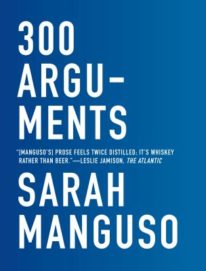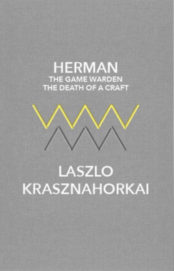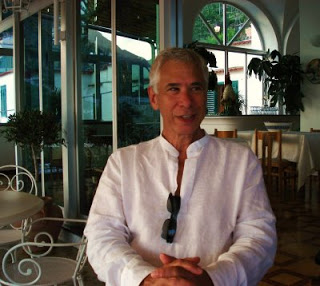 interviewed by David Moscovich
interviewed by David Moscovich
Among other accolades, Martin Nakell received an NEA Interarts Grant and the Gertrude Stein Award in Poetry, and is known widely for his courses on James Joyce and twentieth-century poetry. He has authored a generous number of texts, most recently Monk (Spuyten Duyvil, 2015), Unnamed: the Emotions (Jaded Ibis Press, 2015), The Lord of Silence (Spuyten Duyvil, 2016), and IS (Lit Fest Press, $16), the latter book being the center of this discussion. Nakell is Professor of Creative Writing at Chapman University in Orange, California.
Discussed herein: Dada’s one hundred-year anniversary, Heisenberg’s Uncertainty Principle, Shimon Peres, The Chaos Theory of Literary Composition, epistemological breaks, unsolvable equations, Charlie Parker at Minton’s, James Joyce's neologistic practice, a semantic rumination on the verb "to be," finding Sappho.
I first met Nakell while reading alongside him at the Ukrainian Institute of America, an architectural and cultural gem located steps from the Metropolitan Museum of Art on Manhattan's Upper East Side. This interview was chiseled during the turbulent, astonishing, and heart-obliterating year of 2016, but most notably relevant for this exchange was the exhibition Dadaglobe Reconstructed, which held its opening this past June at the Museum of Modern Art (MoMA) in New York. The MoMA has described Dadaglobe as "Tristan Tzara’s planned but unrealized magnum opus." This intertextual meeting with Dada, a century after the official inception of the movement, catalyzed my impetus to speak with Nakell about IS, which references Tristan Tzara. While IS may not be a purely Dadaist text, it contains at least a glimmer of Dada. Therefore, this interview—conducted by email and spackled with personal conversations during meetings in New York—is in a sense a celebration of one hundred years of Dada.
 As I ruminated upon IS, the book suggested to me a series of inquiries circling around Nakell's methodical, contemplative poetics of intentional tautology: How should readers approach IS? What is the function of the verb "to be" and what are its limits? How do its semiotics inform and misinform our perceptions, articulations, melancholies, politics, being?
As I ruminated upon IS, the book suggested to me a series of inquiries circling around Nakell's methodical, contemplative poetics of intentional tautology: How should readers approach IS? What is the function of the verb "to be" and what are its limits? How do its semiotics inform and misinform our perceptions, articulations, melancholies, politics, being?
These seemed to be questions that IS was asking. In short bursts of potent yet spacious prose, the language reads like an inquiry into its own etymology; at other times IS feels like a rhetorical suffusion which exists to nullify that edge between signifier and signified. To say this with an economy of letters, if Roland Barthes had aspired to verse, he would have written a book called IS by Martin Nakell.
The very suggestive, inter-textual, and philosophically ambitious nature of this text brings into light how the verb "to be" functions as a fundamental building block of language which might be played against itself. I suspect that Nakell's IS has some relationship with e-prime, a system of writing which avoids any variation of the verb "to be," thus arguably creating greater precision of expression. Nakell's IS does not eschew the verb, yet by treating it with accompanying dadaistic absurdities, its boundaries and assumptions are nonetheless called into question.
As much in connection with e-prime as with Heisenberg's Uncertainty Principle, the very notion of finite definitions is overturned in IS—because "to be" by its nature defines or delineates. I imagine that IS wears a pair of trousers, enters the spin cycle, and a mass of dichotomized change falls from its pockets. I examine one of the dampened coins and find Israel on one side, Palestine on the back. Yet another: heads, Tristan Tzara, tails, Paul Eluard. But a closer look reveals all manner of language deployed around the edges of this currency, in a much finer point, severing all these facile dualities.
These were just the preliminary impressions I shared with Nakell as I navigated this rich work. I began this interview, electronically, with a series of possible trajectories for our conversation, and he elaborated. It might be noted that in one of my questions I employed a trope from one of the poems from IS, "Which is more incomplete?" In my reckoning, Nakell's response reads as an extension of the book itself, which gives readers a direct insight into its content.
David Moscovich: What can you tell me about the title of IS? Did you arrive at the title before, during, or after writing the work? How did these pieces come about?
Martin Nakell: IS is simultaneously a rhetorical question, a statement, an exclamation. It has been a lifelong concern/investigation, passion, obsession, poetic resource. It is fascinating, isn’t it, that we are aware of this absolute fact of IS-ness, of being alive, at the same time that our awareness is so consumed with life as conditional, as contingent, as fleeting, as dream. Therefore, the title arrives—arrives is just the right word—before the book was written, during the writing, and after the book was finished. I already had a unifying theme for the book that unifies my own—and all of our—IS-ness.
DM: You go into Pound’s romance with this word: he discovers that Chinese has no passive verb. Every passive condition is connected to an action.
MN: In “Cross,” from my book The Desert Poems of Southern California (Spuyten Duyvil, 2015) and again in Unnamed: The Emotions (Jaded Ibis, 2015), I write: “until his name is synonymous with the verb to be / in its active tense.” To be is an active condition. Merely to be. It is astonishing. IS. For us and for our sense of the phenomenal world. The title of my book Tautological Eye (Spuyten Duyvil, 2011) also refers to this condition, that what the eye sees, while it cannot see itself, is what is, is all that is, is enough in and of itself. I love—among so many others, of course—Bachelard and Francis Ponge. While both contemplate the paradoxical junction of this IS-ness of things and the fluid human reading of things, I am talking about the bare, read—but as yet uninterpreted—actual fact of this IS-ness of things, including ourselves. And, lastly, there is our reality that our world IS, while it may never have been at all.
DM: I am so glad you brought up your poem "Cross." When I heard you read this out loud it struck what I might call a meta-rational chord, although not in the strictest meaning-laden scholarly sense: the poem goes beyond the rational into a realm of thinking about thinking, with a hyper-awareness of language: "To cross this desert you need a hydrohoroscope / you need a winter hydropither / you need a floral magnemizer / to cross this desert / you need a body ferminizer / you need a capacious arbolitage / you need a mind of desert / you need a pragmatical fibrocunculator/ to cross this desert / you need a tautological eye . . ." [italics mine] You mentioned Pound, but "Cross" also seems to follow Joyce in his neologistic practices; I was unable to resist defining one or two of these wonderful terms as I reread them. Please let me know your thoughts on these.
Ferminization: a cross between the effect of religious speech and a powerful fertilizer.
Pragmatical fibrocunculator: the device which exaggerates transmission delay of voice over optic networks as a result of digital wiretapping processes while telephone conversations and/or related metadata are archived.
Hydrohoroscope: an underwater zodiac.
How are other neologisms and conscious tautologies present in your work?
MN: Meta-rational, that’s right on the mark. I don’t view language as limited, unless you mean in a rational sense. In a meta-rational sense, language is unlimited, neither beholden to meaning nor truth. Communication possibilities are vast, wide-open fields. What is it we have to express and how might we express it? As John Cage says, “I have nothing to say, and I am saying it.” Cage’s “nothing” is the nothing-core of his sentence, it allows for everything. So a neologism such as the several I use in “Cross” will be interpreted in a limitless number of ways. “Ferminization,” for example, as you read it: “a cross between the effect of religious speech and a powerful fertilizer.” From there we have the association between early religious incantations as “fertilizer,” as invocations for a fertile crop. Perfectly resonant with the poem. Yet that neologism—a site-specific neologism—“ferminization”—remains empty. Open. Alive. No-thing. To be reinterpreted or not interpreted at all. Meaningful as sound alone. An incantation of its own. And “meaningful” as “meta-rational,” as meaning beyond meaning.
I love those poems which can suggest meaning but only point to it, because they find it only in this meta-rational language—a language, some might say, gone mad—but a language I, and many others, see as having gone further. They strike the chord of consciousness, always beyond us yet at the same time achieved at every moment of our lives. So we need a meta-rational language to say it. In that sense, all vital poetry is meta-rational.
DM: You mentioned in our last meeting that you work with the Chaos Theory of Literary Composition. Can you explain?
MN: At the beginning of A Subset of Chance I lay it out. To paraphrase in brief, borrowing from the scientific proposition of Chaos, every literary composition must undergo that application of energy which brings it into a turbulence where new form, new meaning is discovered. The more each poem or fiction is subjected to such energy, the more emerging new forms appear. These new forms signify both the forms they derive from and the potential forms that they will eventually give way to. Meaning is constantly just ahead, while at the same time, it abides in the continually transformational process of an evolving language. This energy comes from an alertness to the transformational nature of language.
Language, organic, and not static, constantly strives for the new. Every word, each time it’s used, should be a neologism.
Not all writers write with such an understanding. Some, of course, hope only to use language to capture well-worn, worn-out, static meaning. A sort of dead-end emotional closure. Chaos Theory writing opposes that with creation. The poem, the fiction is written only in the writing of it. It is rather what we think of when we call Pollock an “action” painter. It is action writing.
It also opposes the Romantic concept (viz. Wordsworth) that writing “[p]oetry is the spontaneous overflow of powerful feelings: it takes its origin from emotion recollected in tranquility.” He seeks to escape into tranquility. I seek—in Chaos Theory—to be in contact with energy, most of all.
And yes, the neologistic is in the Joycean vein in that Joyce saw language as open, as a creative instrument. Unlike the logical positivists, who sought truth or meaning through the direct statement of language, Joyce, the language-artist, sought art, the emotional-intellectual-spiritual-aesthetic-meaningful experience of a language not bound by the simple philosophical limitations of a language hamstrung by a need to correspond to logical truth. The meaning that literature can attain is not just cognitive meaning, it is something far greater. And it can be attained by a language freed from its obligations to convey any truth.
I would say that all language is tautological. It is itself. It IS. There is the story of Charlie Parker, who, as he stood on the cusp of be-bop, said that he knew what he wanted to play but couldn’t play it. He knew it and knew it. Then, one night at Minton’s in Harlem, he played it. That’s how I see language as meta-language, achieving meta-meaning.
DM: That covers the first part of my question, about neologisms in IS. Could you address the idea of the uses of creative tautology in your books?
MN: I published an entire book entitled Tautological Eye dedicated to this. It’s broken into six sections: a tautological subsequence; a tautology of place; a tautology of iteration; a tautology of imagination; a tautology of return; and an autobiography of fire. The overall themeology is that things, while we will perhaps never know their basic substance—atomic, sub-atomic, string, hadron, etc.—can be known as things. As IS. The first section refers to the event that whatever follows is the same in the sense that it too is itself. This is an anti-metaphorical stance. Nothing is so much like anything else as much as it is itself in an utterly uncompromised, undiluted, perpetually transformational state of being. The section a tautology of place is based on my own childhood on the banks of Lake Huron in Alpena, Michigan. Place is an obvious tautology. We never say “Paris is like Athens.” Paris is Paris, Athens, Athens, Alpena is Alpena.
a tautology of iteration refers to the concept again that each iteration of a thing (an object, an idea, a poem) is a thing in itself, so known. Andy Warhol consciously made copies. We see them one at a time. And, in the case of his Marilyn Monroe series, he colors each one differently. And, in the case of Andy Warhol himself, there are of course many—tautological—Andy Warhols.
a tautology of the imagination signifies the IS-ness even of the imagination. There it is, unnameable and uninterpretable. Experienced. A tautology of return signifies the return of each thing to a being-in-itself.
The change-up to an autobiography of fire is at once an aesthetic choice made for pace and rhythm, and a meaning-choice, for fire is one of those elements seemingly irreducible, while at the same time engulfing the whole book in a cleansing flame.
Within the context of my earlier assertion that each word can be made new, I might add the neologisms in this book are words which add up to neologistic image, that is, images of things which don’t exist (except in the imagination, a tautology of the imagination) such as “men crawling beneath the house raise it on their fingertips hold it up to the spinning world.”
DM: Is there an ekphrastic element to the sections “Because of Paul Éluard” or “Because of Tristan Tzara?”
MN: Yes and no. In the sense that I am (to use Douglas Messerli’s term) “writing through” others. I am moved to write by a particular poem or the spirit of the poetry of a certain poet (in these cases obviously Éluard and Tzara) or of certain people. I have a poem “Because of Shimon Peres,” the Israeli statesman who is a man of such profound language, of unwavering vision of peace even in the midst of the most formidable of odds against it. He is, for me, the kind of political leader that Tzara is a poet, unwilling to accept only seen possibilities, willing to create possibilities. Creators who believe we can create, not just inherit, possibilities.
DM: And could you elaborate on how “Because of Tristan Tzara” is not exactly ekphrastic?
MN: I hope “Because of . . .” will be a lifelong project. Some of the earlier ones I titled “A Cause de . . .”. Rather than versions of or even responses to another person’s art, these poems arise because that person lives or lived and accomplished something which resonates with me, or resonates throughout our culture. The two poets you mention, Éluard and Tzara, have sparked these poems in me through words, rhythms, images, a quest for a poetics with which to explore their work, what I feel to be the whole spirit of their life and work. I have written such poems based on the lives/work of jazz musicians such as Billy Higgins and on statesmen like Shimon Peres, whose whole life-spirit I connect with via the poetics of his extraordinary and unique political-diplomatic language, the peace-quest vision of his career. Working in this way, I establish a relationship between us—for me—that I wish to make public through my poetry.
Long ago, I began a series of poems as a leap off from the 1- and 2-line fragments of Sappho in the Suzy Groden translation. This work lead me to visit the village Sappho lived in on Lesvos. It began with the bust of Sappho as we pulled in to the ferry dock in the Port of Lesvos. Then, a trip on a rickety old Mercedes bus through narrow mountainous roads, to Sappho’s now-abandoned village. There, I stared out at the sea Sappho stared at in the anticipations, longings, and reveries she writes about. I walked the paths in and around the village. And I established, in my own poetic life, a relationship between myself, a male American post-modern poet, with Sappho, a female lyric Greek poet, experimental in language, form, and style. That’s a phenomenal accretion of my poetic experiences. A close reading of her poems as close as one may get.
That trip to Greece I had undertaken partly in search of one of my foundational languages, in search of the foundations of my culture and in search of myself, one of my foundational selves. The first, I found. The second, I think I also found—if nowhere else, then in Sappho’s village, and in the ruins of an ancient amphitheater no one even knew was there. Sitting down on those stone benches, I listened to Oedipus speak to his daughter, Antigone, to Sappho recite her lyrics. That was pro/found. In these two places, by myself, no one around, I could be as Greek, as ancient Greek, as ever I might become, in order to be the poet I am now.
To return to the question—not ekphrastic, exactly—but have I known Tzara, Éluard, Billy Higgins, Shimon Peres, Sappho? Perhaps as much as I know myself, seeing as I do, through my own tautological eye, as they saw through theirs. That’s why I write these “Because of . . .” poems. In IS, there is a poem entitled “Penelópé” which I may have never been able to write without my journey to Greece and to Lesvos.
DM: Recently, I was at the MoMA to see the opening of their exhibition after Tzara’s publication project Dadaglobe, which was to be a book of more than fifty contributors. The book was never published in Tzara’s lifetime, only now as part of the MoMA catalogue. Which is more incomplete: Dada or Dadaglobe?
MN: Which is more incomplete, Dada or Tzara? Which is more incomplete, David Moscovich or Martin Nakell? Which is more incomplete, my apprenticeship under Robert Creeley or Robert Creeley? Which is more incomplete, the Sufficient Insufficiency or the Hindu God Vishnu? Which is more incomplete, the dialogue between David Moscovich and Martin Nakell or the square root of glass? Which is more incomplete, the question or the answer? Which is more incomplete, my hatred or my love? Which is more complete, sex or the afterlife?
DM: You mentioned your admiration for Bachelard. Please tell me more about how his work relates to yours.
MN: I wrote, and later published in the New Orleans Review, a paper on Bachelard, for a critical theory class with Helen Elam that I took in my doctoral program at SUNY Albany. Gaston Bachelard was a French philosopher. He died in 1962. He’d first studied physics, then turned to philosophy. He loved poetry, and read widely in it. I wrote on his book, The Poetics of Space. Bachelard’s scientific perspective dealt with breaches in scientific theories. Those moments when a leap is made—a leap, always, from belief in one system to belief in another—arose from what Bachelard termed the “epistemological obstacle” and yielded up the “epistemological break.” Great language in those phrases. The first, the epistemological obstacle refers to those mind-sets that, unbreakably tied to a scientific belief, resist new ideas. The second, the epistemological break, to that state of mind fluid and light enough to discover new ideas, new realities. Einstein’s relativity discovery is the most famous example, based as it was on intuition, a highly educated intuition, inspiration, and, ultimately, scientific demonstration.
I’ve adopted, stolen from the Chaos Theory of physics, what I call the Chaos Theory of Literary Composition. Its purpose, like Bachelard’s epistomelogical break, is to discover new form. In the chaos theory of physics, the application of heat to an element changes the structure of that element. Water bubbling on the stove, for example. The heat, or energy-source, in literary composition is passion, knowledge, intuition, rhythm, narrativity, image, syntax. When you break open a form you have the potential to discover absolutely new form, the obligation to yourself to do so.
The experience of art and literature is energy. That energy is released by the disruption of form & the spontaneous discovery of new form. That disruption of form opens fissures along which this energy travels—it is where the reader encounters it. If the writer can accomplish this disruption somehow they will reach the reader. If not, they won’t give anything to the world. That’s a statement of the Chaos Theory of Literary Composition—mini-manifesto. In literature and art, we will get nowhere, of course, without an epistemological break and explosion of energy in every word, every poem, every novel, every experience/encounter connected with each of those things.
In The Poetics of Space, Bachelard wanders within the realms of mostly French poets, and the spatial relationships we have architectured out of our needs and emotions and tools and out of the is-ness of our minds for ourselves and which we name home, and by extension, all of the space around us as we live and move. From there, by extension, we must of course go directly to the space of our own bodies.
DM: Speaking of quantum physics—what about Heisenberg’s Uncertainty Principle? Does that play into your book IS?
MN: Yes! I’ve been obsessed with that Principle since I first came upon it many years ago, reading about it as we drove from New York through Canada to Los Angeles. So. Travel. Movement. Relativity. Uncertainty.
A dancer living in Los Angeles, Mary Ann Kellog, who had been Dance Master with Twyla Tharp, having seen some of my fiction, approached me about turning three of my short stories into film. While I still subscribe to Robbe-Grillet’s notion that a fiction is made as a fiction (language), a film as a film (visuals), nonetheless, Mary Ann’s vision was quite sympathetic to the work, visionary and theatrical. We worked together for many months, finally producing the as yet, unfilmed, film: A Heisenberg Trilogy.
I use Heisenberg’s Principle in the classroom constantly, every semester, every course. Where uncertainty prevails, creativity expands. It’s a case that can’t be overstated. And it’s easier for us to discuss vis-a-vis a scientist than an artist, a writer. The scientist still works with facts, data, the observable. Per Heisenberg: we can know either the speed or the location of an atom, but not both. If we know its speed, we can’t stop it to know its location. In between those observations falls the uncertainty. This uncertainty we have been reaching for and achieving and losing again and reaching for as a culture, as cultures, for at least a couple thousand years. For the artist, the writer, there are no facts, no data, and the observable depends on what you see. Contrary to the experience of the scientist, the writer—working in the open, epistemologically broken space of uncertainty—not only faces an epistemological void, s/he faces a spiritual/emotional/experiential/political/social miasma into which he/she must wander to shape that void of uncertainty into art.
Do you perhaps know Mary Capanegro’s Five Doubts? Wonderful book of short fictions in which she talks about delving into doubt to retrieve therefrom, art. I heard a very successful business administrator recently lecture on how important it is in life to have no doubt, to trust yourself and your instincts completely. How wrong for an artist, in his/her art, in her/his life! Where you are never uncertain, you will never see anything new. Where you fear failure (that common motivational “failure is not an option”) you can be/see/create nothing beyond what you already were. Every time I work, I see that failure is an option. That there is only everything uncertain about working, in my work.
So, please, David, join me one day in my class early in a semester. You will hear me invoke the Uncertainty Principle to open up a discussion of, at least, god, poetry, consciousness, and language theory in the past two thousand years as culture and knowledge and science have changed, and done so, we might say, in accordance with Heisenberg’s Principle. During that class, please ask me an unanswerable question; propose to me an unsolvable equation, so that when my students walk out into that snow all they might want to do is to go home with someone else in the class and have sex with them and whether it is in desperation or sorrow or anger or beauty they will be yet too young to discern.
And so how does all that relate to our work? When we know just how contingent language is, how fluid and translucent, how we might use that language to do our work—which is not the work of arriving at truth, not an obligation to explore the soul, even to comfort or inspire—when we know that our work is to pose that unsolvable equation and to leave the reader alone with her/his own Heisenberg, we might really be writing. When we know that our work is not to say and not even to mean but to create an experience of art, of energy, that’s our language, new and altogether new.
The verb, “to do,” implicitly inhabits the title of my book, IS. Better put, the title IS already acts. That’s what I want. Is-ness contains no stasis. Each word, an action, in motion.
Click here to purchase IS at your local independent bookstore

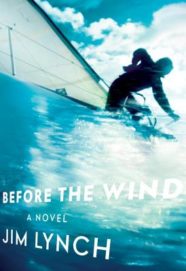 Jim Lynch
Jim Lynch
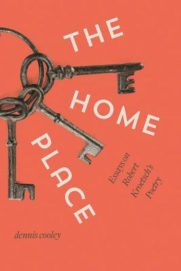




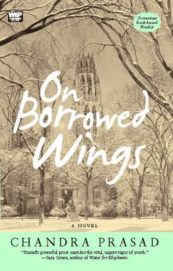
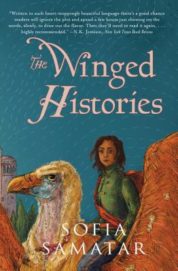

 interviewed by David Moscovich
interviewed by David Moscovich
 Before a Minneapolis reading from his new book Finding Them Gone: Visiting China's Poets of the Past, Bill Porter (AKA Red Pine) sat down with Rain Taxi editor Eric Lorberer and author James Lenfestey to discuss his beginnings as a translator and how the best poetry comes directly from the heart.
Before a Minneapolis reading from his new book Finding Them Gone: Visiting China's Poets of the Past, Bill Porter (AKA Red Pine) sat down with Rain Taxi editor Eric Lorberer and author James Lenfestey to discuss his beginnings as a translator and how the best poetry comes directly from the heart.